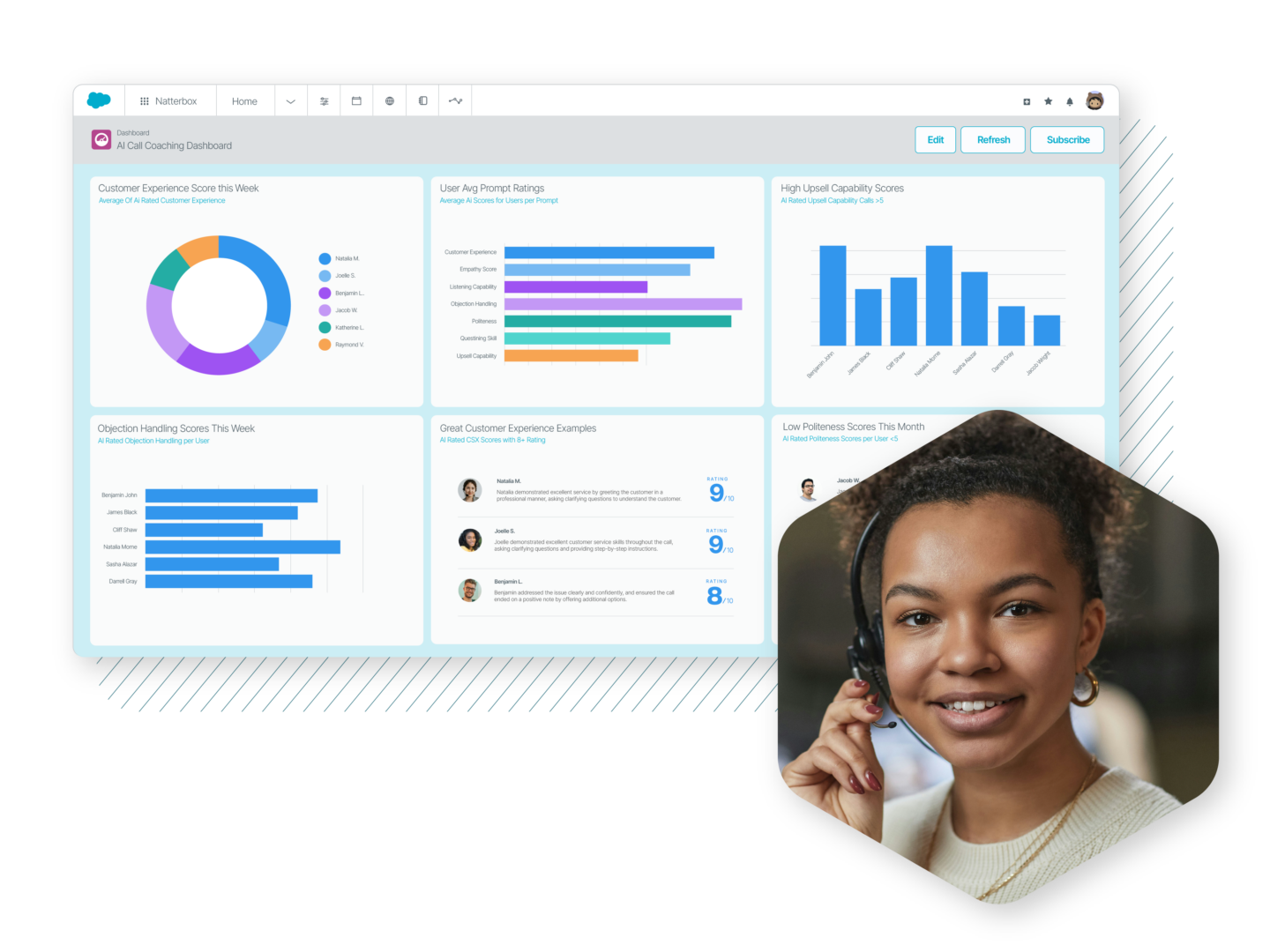Contact Centers
Voice
How To Get the Most Out of Your Voice Analytics System
Natterbox Team

Voice analytics works best for businesses when they have a clear goal of what they’re looking to achieve.
By telling your voice analytics system what types of conversations you want to have highlighted to you, you can ensure that you’re getting the most important calls flagged for your attention—rather than listening back to calls at random, in the hope of stumbling upon something that you need to hear.
If you’ve introduced voice analytics for training and quality assurance, consider how some of the following may be useful to you:
1. Key Themes of Conversation
Would it be helpful to know when your customers are using words that suggest they’re happy, dissatisfied or surprised? How about if they’re swearing and threatening to cancel their contract?
By giving consideration to what sort of words you feel express “Customer Dissatisfaction” or “Escalated Complaint”, your voice analytics platform can then group calls together by category to show you how prevalent these themes are on your phone calls with customers and prospects.
Delving down to a deeper level of complexity, your search criteria could also be expanded to show calls where these themes were present and:
- Calls taken place in the last month
- Calls lasting more than 15 minutes
- Calls with a specific employee
- Employees selecting a wrap-up or disposition code of “Contract Cancelled”
2. Employee Soft Skills

Your employees may not always have happy, easy-flowing conversations with your customers, particularly when something has gone wrong that has affected the customer’s experience. That being the case, consider how you can use your voice analytics platform to ensure your employees are creating the right environment for the call, so that the customer feels well looked after—even if they’re unable to resolve the issue for them.
One way to do this would be to look for a friendly, professional greeting and goodbye, as well as to check to see if the customer feels the employee has resolved their issue or at least improved the situation for them.
To take the greeting, you can decide how broad or how specific you want to be about your expectation of what this greeting should sound like.
At its most basic, you could simply ask the system to look for any mention of “Good Morning / Afternoon / Evening” from the employee for it to be flagged as a greeting. Alternatively, you could be more specific and only give the employee credit if they say “Good morning / Afternoon / Evening, this is {NAME} speaking from {COMPANY}, how can I help?” within the first 15 seconds of the call.
To get a sense for how well the employee checks to ensure they have resolved the customer’s issue, the system could look for any mention of “can I do anything further”, “have I fully resolved” or “is there anything else?” said by the employee in the last 30 seconds of the call.
3. Compliance
Your employees may be compelled by law to discuss certain information, such as disclosing a financial compliance statement with your customers during phone conversations. While it is unlikely to be helpful to flag all the calls where these statements were read out, your voice analytics system can immediately and more usefully highlight calls where these statements were not read.
To prevent your voice analytics system from identifying false positives, it can also be told to look out for a number of keywords in a sentence—or to allow a number of additional words to either be included or some words left out, for the sentence to be considered as being properly spoken.
For example, if your employees are required to state “calls are recorded for training and quality assurance purposes” at the start of each call, your voice analytics platform could be programmed to accept the sentence as being correct if it hears:
- “Calls”, “record”, “training” and “quality” or “Calls are recorded for training and quality assurance purposes” plus / minus any three words from this sentence



